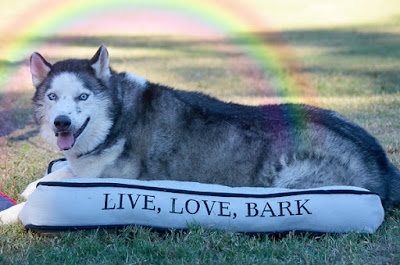Canine Epilepsy: The Results Are In From Neuro Vet Study of Post-Ictal Clinical Signs in Dogs With Idiopathic Epilepsy
Results of "Characterization of Post-Ictal Clinical Signs in Dogs with Idiopathic Epilepsy: A Questionnaire-Based Study
As published in the January/February 2025 Vol. 39, Issue 1 of the Journal of Veterinary Internal Medicine, American College of Veterinary Internal Medicine
Published January 20, 2025
or
to view the PDF go HERE.
*ABOUT THE AUTHORS *
Aran Nagendran: Co-Head of the Veterinary Neurology and Neurosurgery Service, R(D)SVS, University of Edinburgh,
Senior Lecturer and EBVS Specialist in Veterinary Neurology/Neurosurgery, Scotland
Julie A. Nettifee: RVT, MS, VTS (Neurology); The Companion Animal Epilepsy Research Lab, North Carolina State University-Collecge of Veterinary Medicine; and the 2020 American Humane Hero Veterinary Nurse, USA
Dani Carter: Student, Doctor of Veterinary Medicine (DVM), Department of Clinical Sciences, North Carolina State University-College of Veterinary Medicine, USA
Karen R. Muñana: DVM, MS, Diplomate ACVIM (Neurology), Professor of Neurology, The Companion Animal Epilepsy Research Lab, North Carolina State University-College of Veterinary Medicine;
International Veterinary Epilepsy Task Force, USA
* ABSTRACT *
Background
Post-ictal (PI) clinical signs are a key defining stage of seizure manifestation in dogs. However, this phase remains poorly understood.
Objectives
To further characterize PI signs and their relation to other parts of a seizure, and understand the owner's perception of how PI signs affect the quality of life (QOL) of the dog.
Animals
Eight-seven dogs with a diagnosis of idiopathic epilepsy from a single institution.
Methods
The prospective questionnaire-based study surveying owners of dogs previously and newly diagnosed with idiopathic epilepsy.
Results
Post-ictal signs were identified in 79/87 dogs, 5/5 of dogs with focal seizures and 74/82 of dogs with generalized seizures. Median duration of PI signs was 30 minutes (range, 5-4320 minutes). The most common PI signs reported were disorientation (50/79) and wobbliness or clumsiness (49/79). Within a year, a change in PI signs was seen in 18/79 dogs. The administration of benzodiazepines was significantly associated with an increase in duration of PI signs (P = .04). Post-ictal signs had more impact on dogs' quality of life compared with ictal signs (P < .01). Groupings of co-existing PI signs identified included disorientation, blindness and deafness.
Conclusion
Post-ictal signs are a commonly reported aspect of seizures in dogs with idiopathic epilepsy, both in focal as well as generalized seizures. Co-existence of signs could provide some valuable insight into the relevance of this particular phase of a seizure. Owner-reported signs and documentation emphasize the need for a better understanding of PI signs in dogs with idiopathic epilepsy.
To read the FULL article, with charts, please go to the Wiley Online Library HERE.
Julie Ann Nettifee RVT, MS, VTS (Neurology)
North Carolina State University
College of Veterinary Medicine
Department of Clinical Sciences
1060 William Moore Drive
Raleigh, NC 27607













They seem to be doing some really good and interesting research in NC!
ReplyDeleteThank you for this important post
ReplyDeleteI can imagine understanding the post-seizure period would help pet parents help their pets recover more quickly, or at least better and more fully.
ReplyDelete